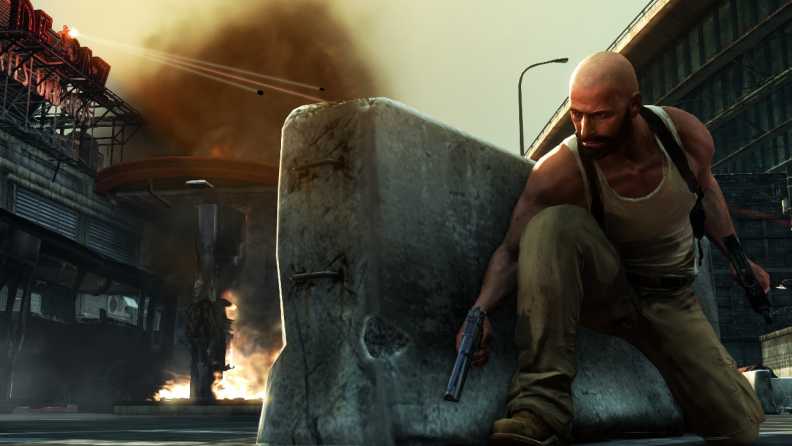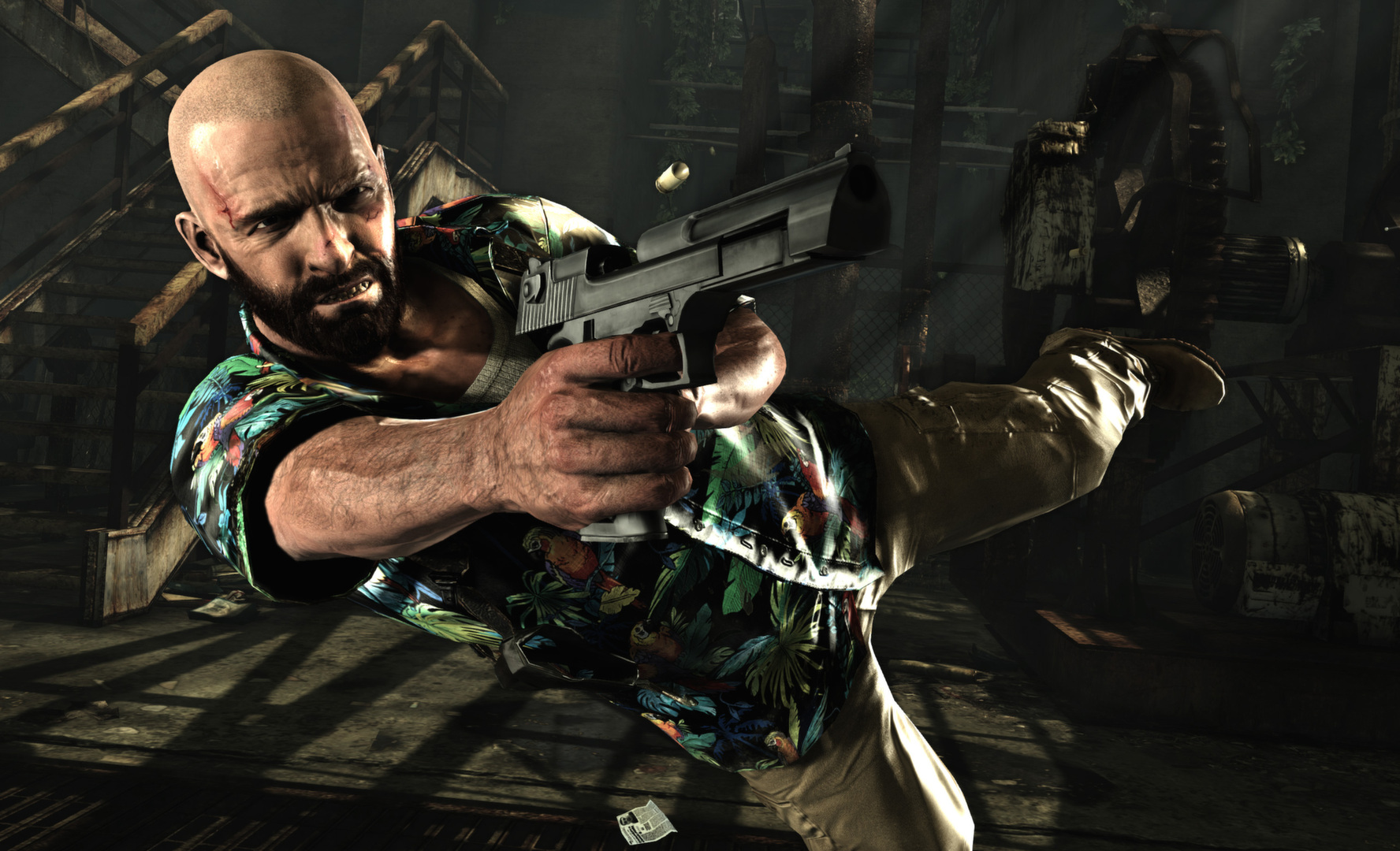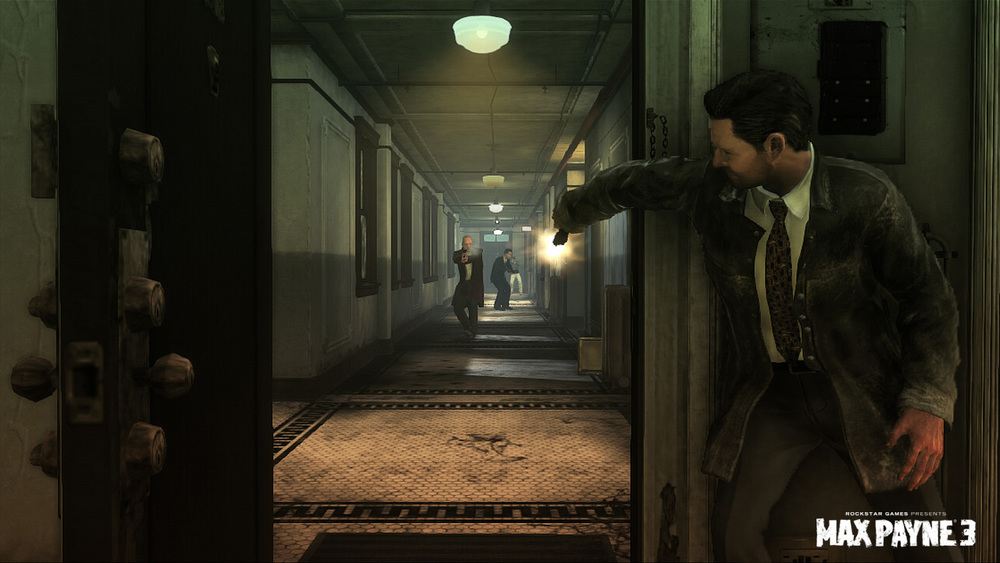Frankly, I think I was a little too hard on Max Payne 3 a decade ago. And maybe most people have, I suspect, especially fans of the series.
Having gone through the entire series, and also declaring Max Payne 2: The Fall of Max Payne as one of my favorite games, I wasn’t inclined to be too favorable to the “reimagined” Max Payne of Rockstar. Remedy’s style of film noire, goofy nonsense, and Norse mythology does not fit in the world of the Housers, whose wheelhouse comes in genre pastiche. They make video games feel like movies, an admirable goal, but one that’s also difficult to achieve without relying on your pop culture influences to fill in the blanks. I mean, the Man on Fire influence range from words on screen to the strange greenish filter that pervades Max Payne 3 from beginning to end. It was obvious in 2012, and it remains obvious a decade later in 2022, and yet I found myself inclined to give it a second opinion.

In current year, Max Payne 3 felt more like the other Max Paynes than I gave it credit for. It’s a dark, dreary tale about how horrible the world can be. It’s also a story about a man who continues to suffer because, in a phrase, he won’t let go. And it’s also a game about doing the same thing over and over again, sometimes expecting different results. I think we could call it, in a word, ugly. The people in this world are all horrible, Max included; only our protagonist has the Holden Caulfield-esque wherewithal to know how shallow everyone else is, and yet also have the self-awareness to know he also is an irredeemable piece of trash. Everyone in the game wants power, money, or both, and will do anything to get those things. All Max Payne wants is closure, a sense he finally did something right in the world, and this Pyrrhic quest ends over and over again. Max can’t save the girl; Max always gets the girl shot.
Max embodies the myth of redemptive violence, that somehow you can fix it all with enough bullets. And boy, Dan Houser and his writing team don’t even give us a real victory here. Literally every level in Max Payne 3 ends in some sort of loss by somebody, and their reaction to that loss which leads to further loss. Nobody “wins”. Yes, the antagonist gets his comeuppance, but we barely have the context to even understand whether what Max does will really solve…well, pretty much anything. Other than stopping his drinking habit and, I hope eventually (though it’s left open ended), his self-destructive behaviors. It’s hard to make a fundamentally horrible person a likeable one in writing, but Max hits that note perfectly.
And further, the setting of Brazil might be seen as exotic window dressing, but this time around I get the use of it. How many Americans really understand the inner workings of foreign countries? Frankly, I don’t most of the time. It is hard to understand something happening in other countries in a political sense, let alone understanding the language. The culture and language barrier in Max Payne 3 communicate how little Max actually knows about what’s going on in the story. The more he pieces together, the less he knows, to the point a character literally tells him and the audience “You’re not supposed to get it”. How can you fix something you don’t understand? You can’t. Is trying good enough? Or is it just a way to push aside the real problems in your own life? I think Max Payne 3 doesn’t get enough credit for this sort of thing – the writing is loud, bombastic, simple, but the subtext is fascinating.

That gives something underrated to the game that I failed to identify a decade ago: Max Payne 3’s atmosphere. The soundtrack, by noise-rock indie band HEALTH, continues to slap, of course, but I’ve never seen an action game with such internally consistent feeling. The chase after that feeling actually made HEALTH into one of my favorite bands, so I suppose that says something. I dunno how to describe it, but it gives the game an addictive quality that made me keep playing despite dying over, and over, and over again. Rockstar took recognizable elements of Remedy’s work and configured it to their own indulgences, but no game in their catalogue feels quite like Max Payne 3. I recently played and finished Red Dead Redemption 2 and Grand Theft Auto V – both games with particular feelings of their own, but definitely games that didn’t hold me in quite the same way as Payne’s Violent Brazilian Vacation. The $100 million dollar budget spread over 8-10 hours instead of 50 doesn’t hurt either, especially with those Hard Boiled particle effect nonsense going out everywhere (done first in F.E.A.R., but definitely bumped up a notch here so a mundane office becomes a firefight heaven).
Oh yeah, the “dying over and over again” part…so, I played Max Payne 3 on Hard this time, to really get a taste of whether the gunplay holds up. A game’s mechanics should survive increases in difficulty, provided the designers give you enough options to get creative with “aim reticle at head a lot”. In that way, Max Payne 3 hearkens back to the trial-and-error design of Max Payne 1 over the improvisational bullet ballet of Max Payne 2 – but in a good way!

Max Payne 1’s later setpieces always stood out to me as memorization holes – you know X Guys comes out when you open Door Y, so shootdodge into the room at Point Z. And Max Payne 3 has a bit of that flavor – there will be eight guys here, you find out as you walk too far forward out of cover only to get popped. But instead of the dying instantaneously with no warning being a function of making the enemies deal tons of damage, it’s really because you decided to walk out of cover without a clear plan of attack. Max Payne 3 uses a pretty basic cover system, and you’re encouraged to use it a lot at higher difficulties. Shootdodging is the game’s equivalent of the grenade, to get your foes when they’ve hunkered down into cover and they won’t pop out.
The AI in this game, by the way, likes to play with your expectations of dumb enemies in shooters – a smart guy doesn’t pop out of cover, because like why? So he can die? But, on the other hand, if the game knows it outnumbers you, sometimes they’ll just charge your position because they see it as an option with little risk. And heck, sometimes that even works, because that has caught me off guard more than I care to admit. One guy charges from the side, another guy flanks you because you’re so focused on the audacity of this Ufe going straight for you. I like this approach – the game’s very creative and constantly keep you on your toes with room setups and enemy composition, plus their internal decision-making process.
So, think of it like this: every decision in a firefight is a risk. Staying in cover too long is a risk, as some cover disintegrates and large enemy groups like to flank you. Shootdodging is a risk, because landing has its own recovery period where, in the open, you’ll likely die very fast. The game forces you to make quick decisions and figure out how to quickly eliminate all the threats while putting yourself at the least risk – or, at the very least, finding the right place to make a risky gamble that you can kill three or four dudes before you hit the ground. And, further, whether or not you’ll run out of ammo or painkillers before you need to move to get bullets.

Sure, many fights do boil down to staying in a piece of cover, then using bullet time to pick off guys one at a time from that cover, but you can’t do that with every encounter, and by the time enemies start wearing body armor and helmets that prevent one hit kills, you will need to fight for every scrap of ground and use every piece of ammo and health wisely. But, because of the way the checkpoint system works, it’s like a laboratory of slow motion death – try one tactic, die, then try again. Eventually you find something that works, but every encounter plays out differently and that’s something I can appreciate.
This kept the game engaging from beginning to end, and I greatly enjoyed my second go-around. Yet again, no other shooter feels quite like Max Payne, and I think the uniqueness of the whole experience led to it aging very well in my book. Is it a favorite game? Well, I can’t beat around the busy anymore – I’d probably give it a 5/5 now, in retrospect. I actually know I’ll play the game again…maybe in another decade!
